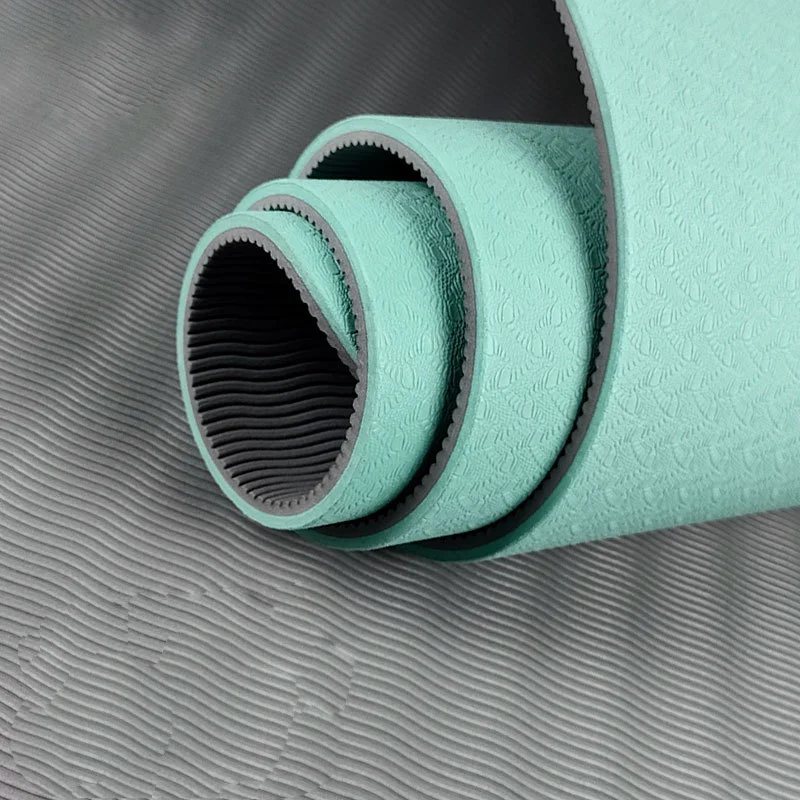When it comes to choosing the right yoga mat, TPE (Thermoplastic Elastomer) and EVA (Ethylene Vinyl Acetate) are two popular materials that yogis often consider. Each material offers unique benefits, but understanding their differences can help you make an informed decision that suits your practice needs.
TPE Yoga Mats: Comfort and Support in Every Pose
TPE yoga mats are renowned for their exceptional comfort and support during yoga sessions. Unlike traditional PVC mats, which can be harsh on joints, TPE mats provide a cushioned surface that gently supports your body in various poses. This makes them ideal for both beginners and advanced practitioners looking for a mat that enhances their practice experience.
Moreover, TPE mats offer excellent grip, preventing slips and ensuring stability throughout your yoga routine. This superior traction not only enhances safety but also allows you to focus more on your practice without worrying about mat movement.
The Cost-Effectiveness of Investing in TPE
Investing in a TPE yoga mat proves to be cost-effective in the long run. While they may have a slightly higher initial cost compared to EVA mats, TPE mats are durable and resistant to wear and tear. Their longevity means you won’t need to replace them frequently, saving you money over time. Additionally, their easy maintenance—often requiring just a wipe-down with a damp cloth—further adds to their value and convenience.
Sustainability and TPE: A Greener Choice for Yogis
For environmentally conscious yogis, TPE mats are a greener choice. These mats are often manufactured using eco-friendly processes and materials, reducing their environmental impact compared to traditional PVC mats. TPE is recyclable and biodegradable, making it a sustainable option for those who prioritize reducing their carbon footprint.
Furthermore, TPE mats are free from harmful chemicals such as phthalates and latex, ensuring a safe and non-toxic yoga practice environment. This makes them suitable for individuals with allergies or sensitivities to synthetic materials.
In conclusion, while both TPE and EVA yoga mats have their merits, TPE mats stand out for their superior comfort, durability, and eco-friendliness. Whether you’re a seasoned yogi or just beginning your yoga journey, investing in a TPE mat ensures you receive the best support for your practice while aligning with sustainable living principles.
Make the switch to TPE today and experience the difference in your yoga practice—comfort, support, and peace of mind, all rolled into one mat.
Explore, customize, purchase, and wholesale TPE Yoga Mats products.
FAQ
1. What is TPE yoga mat made of?
TPE (Thermoplastic Elastomer) yoga mats are made from a blend of materials that provide flexibility, durability, and comfort during yoga practice.
2. Are TPE yoga mats eco-friendly?
Yes, TPE yoga mats are eco-friendly as they are often manufactured using recyclable and biodegradable materials, making them a sustainable choice for environmentally conscious yogis.
3. Do TPE yoga mats provide good grip?
Absolutely! TPE mats offer excellent grip, ensuring stability and preventing slips during yoga poses, even in sweaty conditions.
4. How do you clean a TPE yoga mat?
Cleaning a TPE yoga mat is easy. Simply wipe it down with a damp cloth after each use to maintain hygiene and extend its lifespan.
5. Are TPE yoga mats suitable for beginners?
Yes, TPE yoga mats are ideal for beginners due to their cushioned support and comfort, which helps in adapting to various yoga poses with ease.
